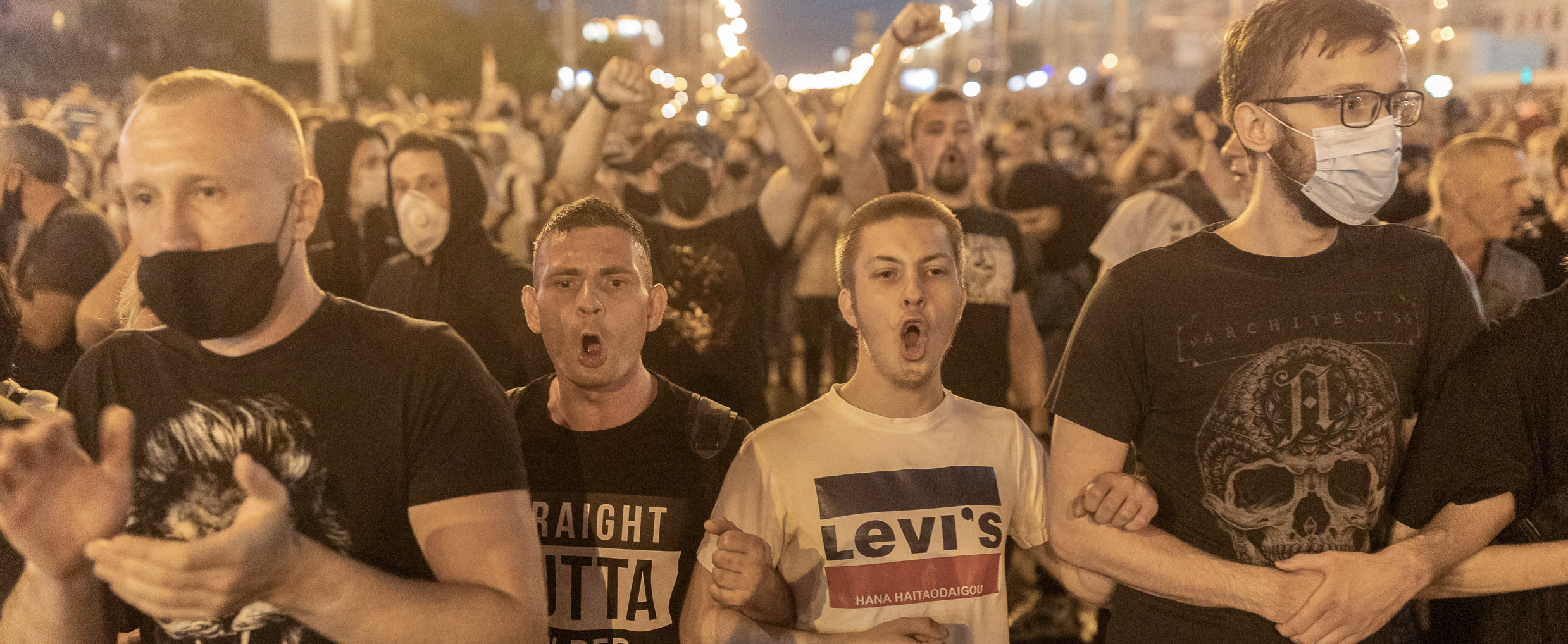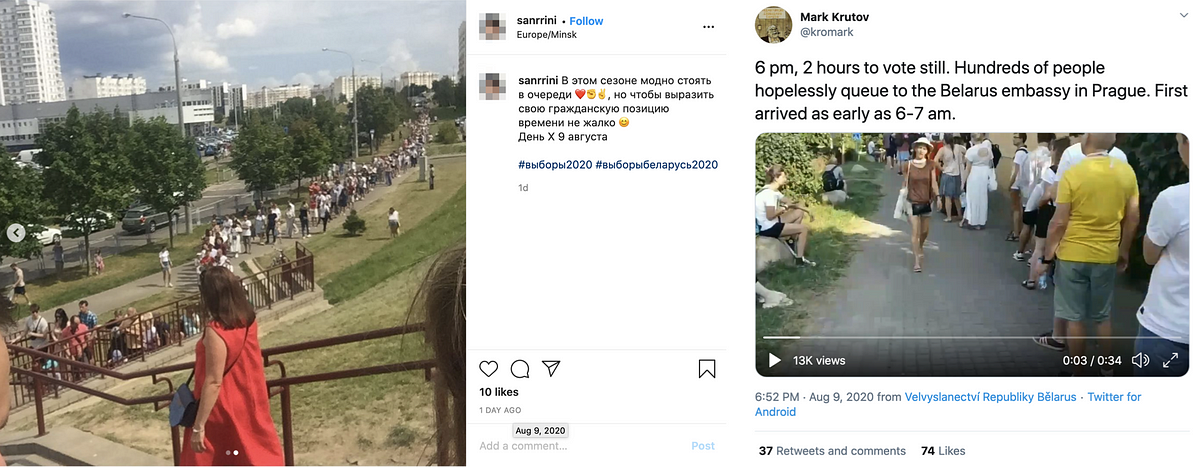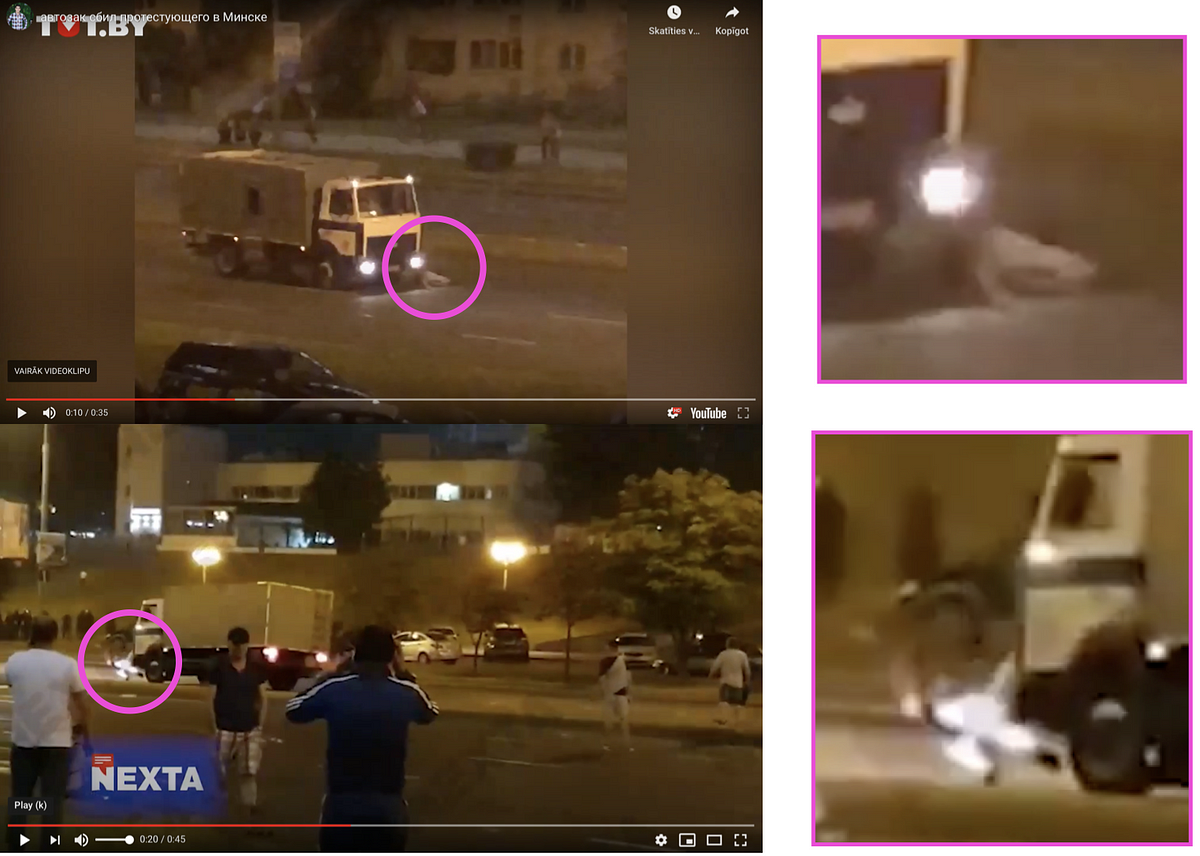Belarus throttles Internet, cracks down on protesters as Lukashenko proclaims election victory
Election monitors question election’s legitimacy as
Belarus throttles Internet, cracks down on protesters as Lukashenko proclaims election victory

Election monitors question election’s legitimacy as rival candidate Svetlana Tikhanovskaya flees the country

Note: the following story contains disturbing imagery of violence against protestors.
On August 9, 2020, the day of the presidential election and amidst reports of widespread electoral fraud, the country was hit by nationwide internet connectivity disruptions, with critics blaming the government while authorities claimed they were the result of DDoS attacks originating from outside of Belarus. In spite of limited internet connectivity, the political rallies quickly transitioned into protests, which security services have responded to with a violent crackdown.
According to preliminary results announced by the Central Election Committee of Belarus, incumbent President Alexander Lukashenko received 80.08 percent of votes, while his main rival Svetlana Tikhanovskaya received just 10.09 percent. However, international organizations and several countries, including Council of Europe, the United States and Lithuania declared that presidential election in Belarus was neither free nor fair. Tikhanovskaya appealed the highly contested election results and Belarusians frustrated with President Lukashenko’s power grab took to the streets of Minsk and other cities.
The government responded to the protests with a brutal crackdown, as police used water cannons, stun grenades, and rubber bullets against protesters. Photo and video footage from around the country showed that some protesters were seriously injured, and there were reports of at least one death. Restrictions on internet connectivity within Belarus limited the amount of open-source footage from protests, but has not completely curtailed it. And on August 10, two days after the election, Tikhanovskaya announced that she had fled the country for Lithuania, fearing for her family’s safety.
The standoff between Lukashenko and the protesters comes at a momentous, and potentially dangerous, time for the country. Having ruled the country unopposed for more than 26 years, Lukashenko’s popularity has cratered in recent months, exacerbated by ongoing tensions with both Russia and the EU, as well as his failure to tackle the COVID epidemic in a coherent fashion. As the election approached, multiple potential presidential candidates lined themselves up for running a campaign, only to be hounded out of the race through intimidation, disqualification and even detainment. While this might have led Lukashenko to believe he would experience no serious opposition, the attrition of opposition candidates led to Tikhanovksaya emerging as the consensus candidate rising to the top. In recent weeks, her campaign rallies attracted record crowds across Belarus, with activists hoping her candidacy could finally lead to Lukashenko’s departure from power. And despite numerous signs from election observers that she placed strongly in many voting stations, Lukashenko and his state apparatus appear to have been well prepared, combining Internet restrictions, dubious election results and a well-coordinated police crackdown to secure his place in power.
Nationwide internet disruption
Repressive governments resort to temporary internet shutdowns to sabotage the free flow of information in periods of civic unrest. Internet infrastructure in Belarus is highly centralized, as state-owned companies control both mobile networks and internet cables coming into Belarus. On August 9, internet users started to experience limited access to social networks and messaging apps, including Viber, Telegram, Facebook, Twitter, Instagram, and VKontakte. Meanwhile, the websites of several independent media outlets, including Nasha Niva (nn.by), Mediazona (zona.media), Afn.by, and tut.by, as well as an online platform for an alternative tally of votes, were all blocked. Several mobile internet operators, including ByFly, MTS, Life, and Cosmos TV, acknowledged disruptions in their connectivity. The disruptions took place not only in the capital, but also in other cities across Belarus, affecting both mobile internet and fixed-line operators.
Shortly after complains of internet disruption surfaced, the internet monitoring group Netblocks confirmed that a disruption started in Belarus around 3 a.m. local time on August 9 and was followed by a second wave of disruption later that morning as the polls opened. By noon, many online services became unavailable. The director of the Society for the Protection of the Internet, Mikhail Klimarev, later suggested that internet monitoring devices registered an 80 percent drop in connectivity that morning. Russian independent media outlet The Bell reported that one hour after the end of voting, when it was announced that Lukashenko received about 80 percent of votes, almost all Belarusian sites stopped working. This disruption created an information vacuum in which Belarusian citizens as well as the international community were unable to get updates. Internet users reported experiencing trouble while uploading photo and video files to social networks. NetBlock director Alan Toker argued that disruption was caused by “brute-force blocking strategy at the network layer” instead of blocking specific platforms without limiting the broader internet. On August 10, Telegram founder Pavel Durov tweeted that his company had enabled anti-censorship tools to keep its platform available for users in Belarus, though the shutdown widely impacted its availability.
ICYMI: #Belarus is in the midst of nation-scale internet disruption affecting fixed-line and cellular operators; chart shows progressive disconnection of various online platforms, with public DNS services first to go from midnight, then social media 📉
📰 https://t.co/JcBhvhgVcR pic.twitter.com/DfPOM87yOK
— NetBlocks (@netblocks) August 9, 2020
The Belarusian government accused external actors for the internet disruptions. President Alexander Lukashenko stated on August 10 that the internet was blocked “from abroad” in order to sabotage the election. The National Computer Incident Response Center of Belarus (CERT.BY) announced that on August 8, websites of the State Security Committee of (kgb.gov.by) and the Ministry of Internal Affairs of (mvd.gov.by) had been subject to external distributed denial of service (DDoS) attacks. State-owned company Beltelekom, which is one of two authorized internet operators in the country, argued that the problems with connectivity were due to an influx of foreign internet traffic.
Civil society groups did not believe government officials’ excuses about the connectivity problems, and 30 human rights organizations from Belarus, Russia, Ukraine and other countries signed an appeal to the UN special rapporteurs on freedom of speech, freedom of assembly and human rights in Belarus over the internet shutdown. They accused Belarusian authorities of deliberately blocking data transfer protocols, resulting in internet disruption across Belarus. In doing so, the government violated not only international norms, but also the Belarusian law on telecommunications, according to which access to communications and the Internet can be suspended or limited only when a state of emergency or martial law has been declared. NetBlock also suggested that “there’s little direct evidence that cyber-attacks caused the ongoing internet disruption.”
High turnout
Amidst the internet disruptions, the elections included record turnout of 84 percent, according to the Belarus Central Election Commission. The highest turnout was in the Brest region at nearly 92 percent.
Media reported long lines at the polls in Minsk and abroad.

Media reports on the high turnout were corroborated by similar reports on social media.

Tut.by reported that the turnout exceeded 100 percent of expected voters in some constituencies, and social media users reported that they could not vote due to the length of the queues. In Moscow and voting sites outside Belarus, people who were unable to vote because of long lines remained at the polling locations. Some of the lines eventually turned into protests.
The head of the Belarus election commission, Lidia Yermoshina, called the long lines a “provocation by a protesting electorate.” However, there was no evidence that protest activity was planned as opposed to spontaneous and in response to not being able to vote.
Violent crackdown by Belarus police
Soon after the polls closed, the police commenced a violent crackdown on protesters remaining in the streets. At about 9 p.m. local time, independent Belarusian online outlet Tut.by reported that several people had been detained by OMON, the country’s police special forces, in Minsk. The report cited witnesses who told the outlet that 30–40 people remained by the polling place located at the 16th gymnasium in Vyasnyanka, Minsk. Some of the people reportedly tried to talk to policemen who guarded the doors about the voting process. Soon, an OMON bus arrived with 15 additional policemen. The commander then allegedly gave an order to “take everyone with a phone.” As a result, five people were arrested. Similar detentions reportedly happened by the polling place located in the 43rd gymnasium, as well as one located at the Planeta Hotel.
The unrest escalated as protesters gathered in the streets of Minsk and other cities in Belarus. Tut.by reported crowds shouting, “Police with the people,” “We believe, we can, we can win,” and “All for one and one for all.”
Footage published on the NEXTA Telegram channel showed OMON brutally detaining some protesters. The footage depicted the use of flash bang grenades, tear gas, water cannons, and rubber bullets. At least three independent videos showed a prisoner transport vehicle driving directly into a crowd of protesters. One of the protesters held onto the front of the vehicle, but as the vehicle kept speeding up, the protester fell under the wheels.


When others ran to help the injured protester, police started to throw flash bang grenades at them.
Другой ракурс. Автозак сбил человека pic.twitter.com/6h76Q6kd83
— Беларусь інфармацыі (@NEXTA_EN) August 9, 2020
https://www.youtube.com/watch?v=IYqyOkCZ4lI
Belarusian human rights center Vesna confirmed the death of the man that fell under the prisoner transport vehicle, citing the footage published by Tut.by. The Belarusian Ministry of Interior denied that the man had died.
Protests are expected to continue into the foreseeable future; the DFRLab will continue monitoring the situation in Belarus.
Givi Gigitashvili is Research Assistant, Caucasus with the Digital Forensic Research Lab and is based in Georgia.
Nika Aleksejeva is a Research Associate, Baltics, with the Digital Forensic Research Lab.
Follow along for more in-depth analysis from our #DigitalSherlocks.

